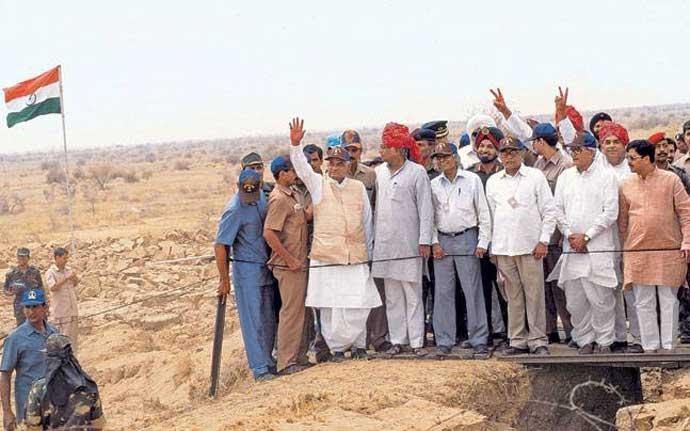BLOGS
At Saras, our mission is to ensure that all the students are given an opportunity to reach their full potential. We are passionate about creating and encouraging tomorrow’s innovators and problem solvers and make high quality education available to all.

National Technology Day of India
Every country of some significance never fails to acknowledge the contribution of Science and Technology in that country's development. And by observing a "National Technology Day”, the country acknowledges the contribution in a formal way.
In India, National Technology Day is celebrated on May 11 every year since 1999 to commemorate India's scientific and technological advancement. Started by then Prime Minister of India, Shri Atal Bihari Vajpayee, this day is celebrated across India by the country's technical and scientific research institutes.
Why is this day chosen? The reasons are multiple.
This day serves as a reminder of India breaking into the elite group of nations with nuclear weapons. On May 11, 1998, India conducted three successful nuclear tests at the Indian Army's Pokhran Test Range in Rajasthan under Operation Shakti. Two more nuclear tests were conducted on May 13. The tests were led by late President Dr. APJ Abdul Kalam. The mission was carried out by the Indian Army in collaboration with scientists from the Defence Research and Development Organisation (DRDO), Bhabha Atomic Research Centre (BARC), and Atomic Minerals Directorate for Exploration and Research (AMDER). These tests made India capable of building thermonuclear weapons and fission bombs. The event was named "Operation Shakti 98".
Well, 'Operation Shakti' is not the only reason for declaring May 11 as National Technology Day. Other significant events also took place on this day. They are:
India tested its first indigenous aircraft, Hansa-3, on this day from Bengaluru HAL airport. This was a collaborative project among National Aeronautical Laboratories (NAL), IIT Kanpur, and the Center for Scientific and Industrial Research (CSIR). This 2-seater small trainer aircraft was built by NAL.
The Surface to Air ‘Trishul’ missile (SAM) was also test-fired on May 11, 1998. 'Trishul' is a part of India's Integrated Guided Missile Program (IGMP) under which. 'Pruthvi', 'Akash', 'Naag', 'Trishul' and 'Agni' missiles are developed.
It is now recognized over the world that Science and Technology will determine the future course of power dominance. STEM education is the backbone to produce tomorrow's scientists, engineers, and technocrats. SARAS-3D identified the gaps in the teaching of the STEM subjects and has come out with a revolutionary, first of its kind, interactive, stereoscopic three-dimensional learning system called 'Genius 3D'.
With Genius 3D, learning and understanding the science subjects (Physics, Chemistry, Biology, and Mathematics) is interesting and interactive. The students grasp the concepts and build upon their careers in science and technology and help grow themselves and the country in general.
Blog post by: Mr. Kashayap Mankad, Technical Director at Saras-3D
BACK